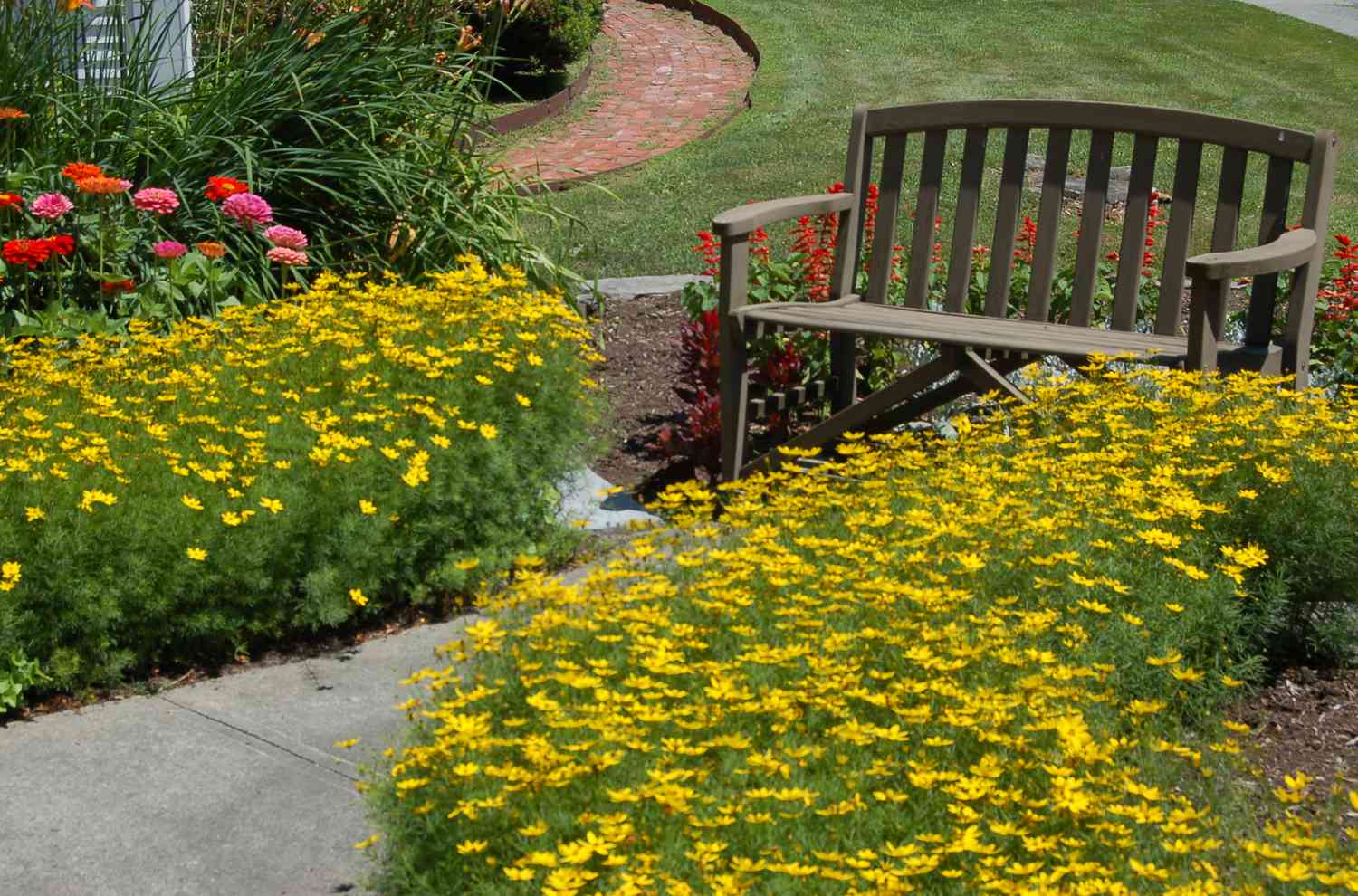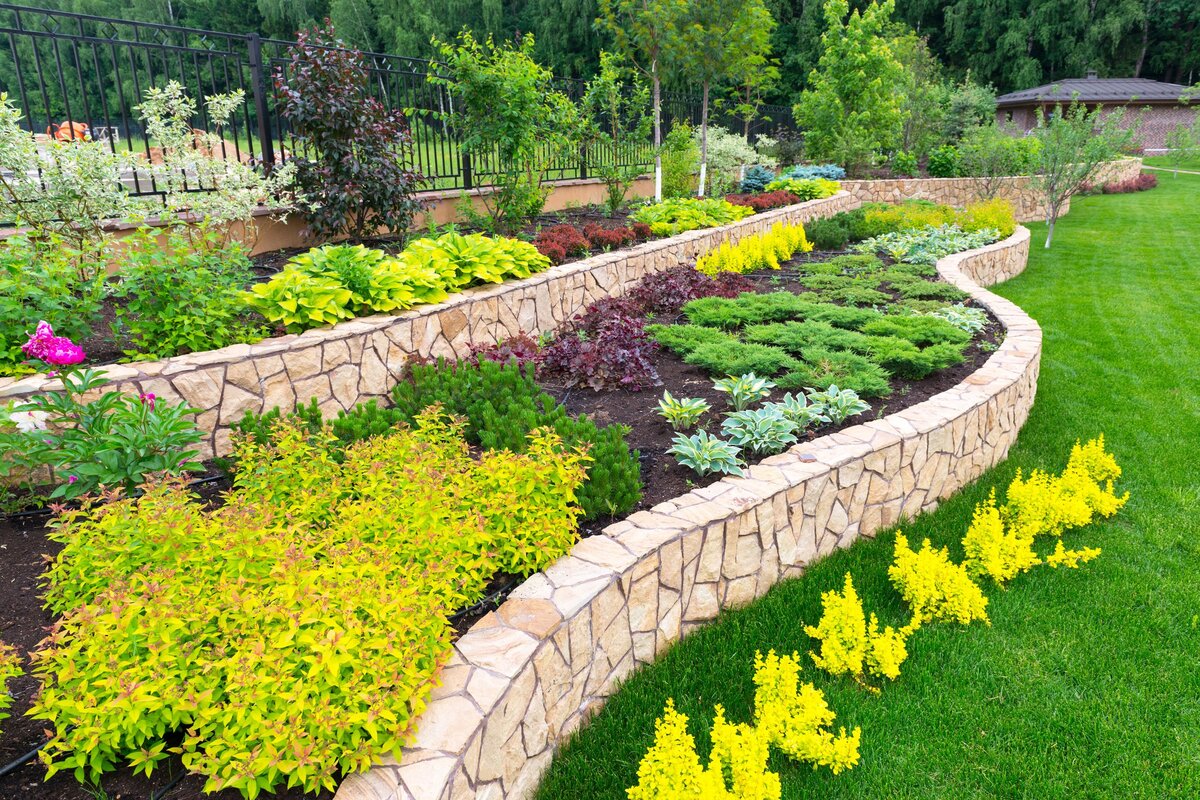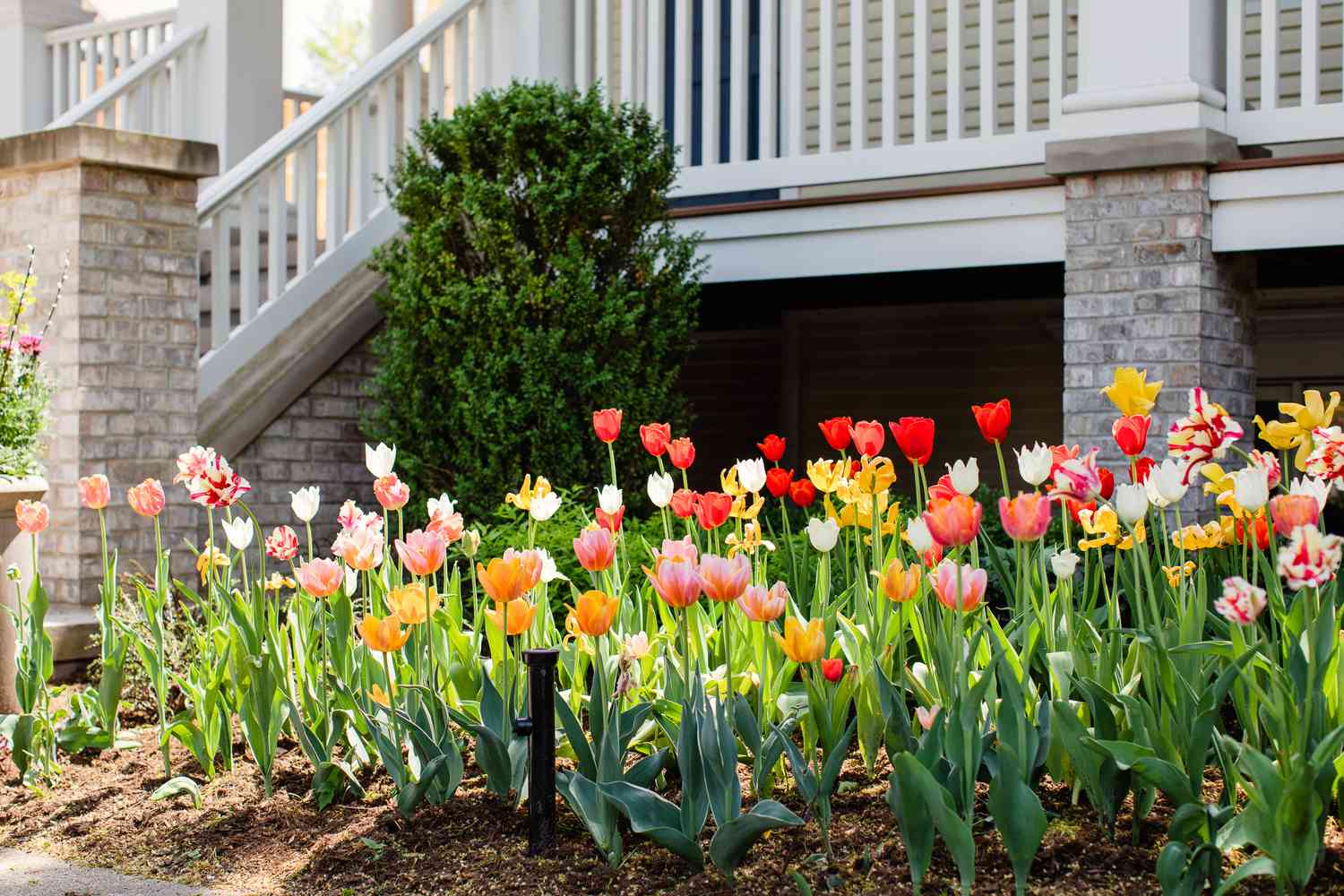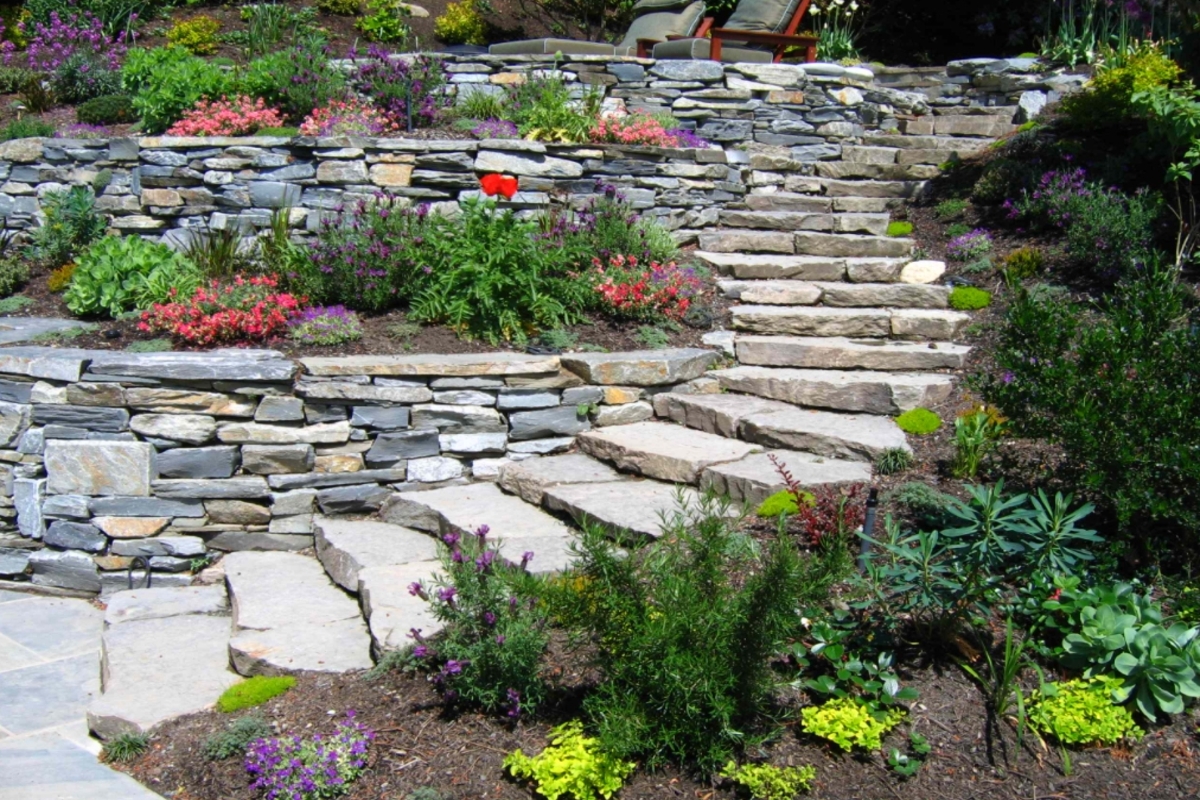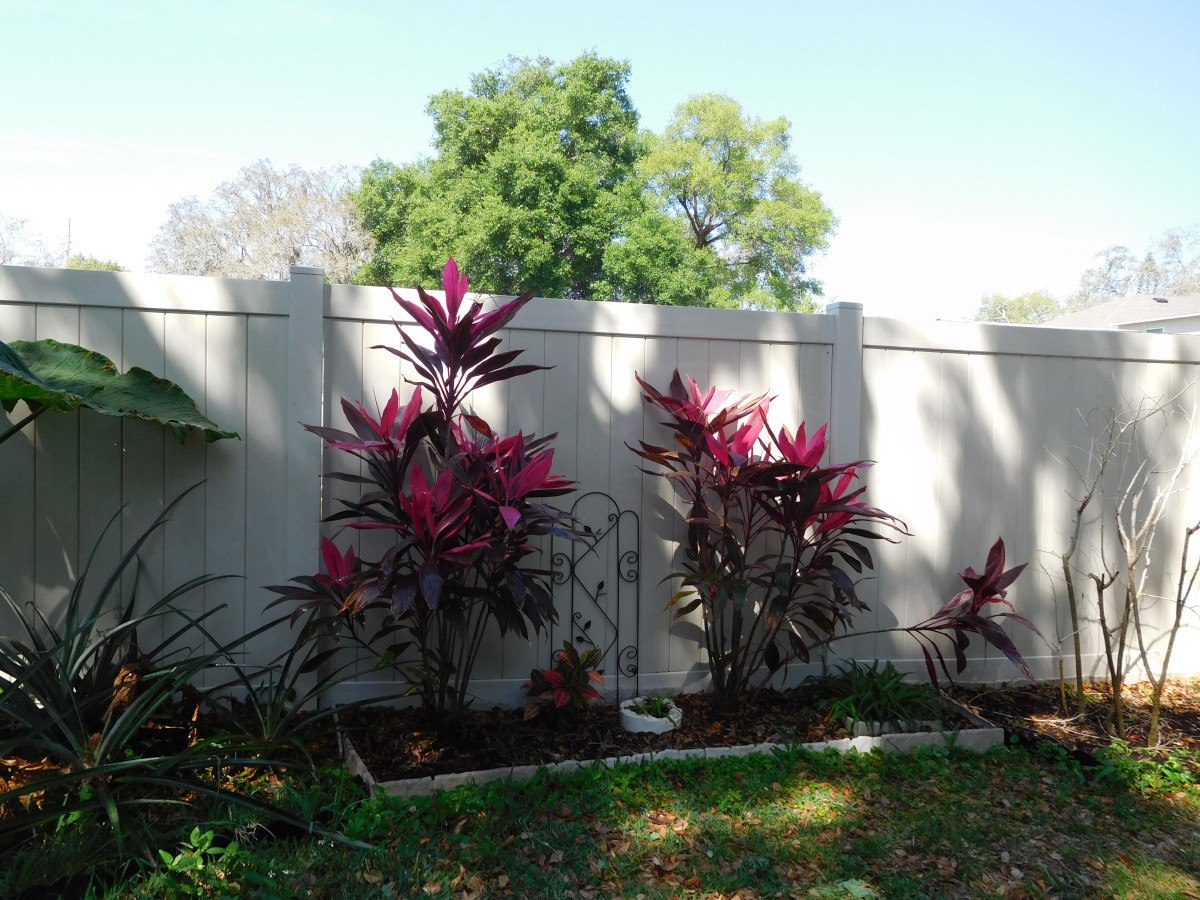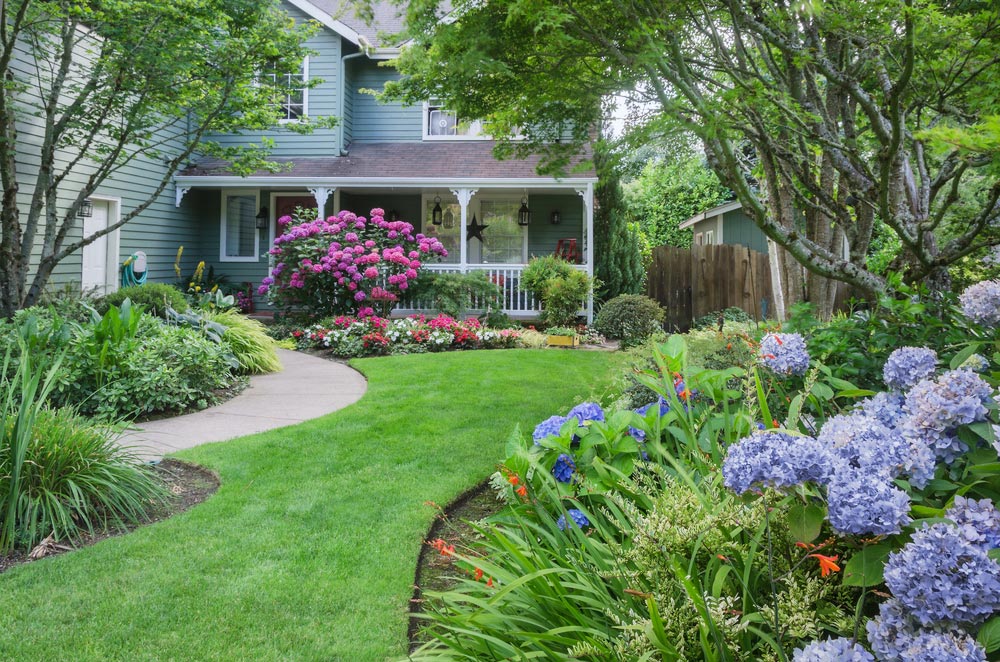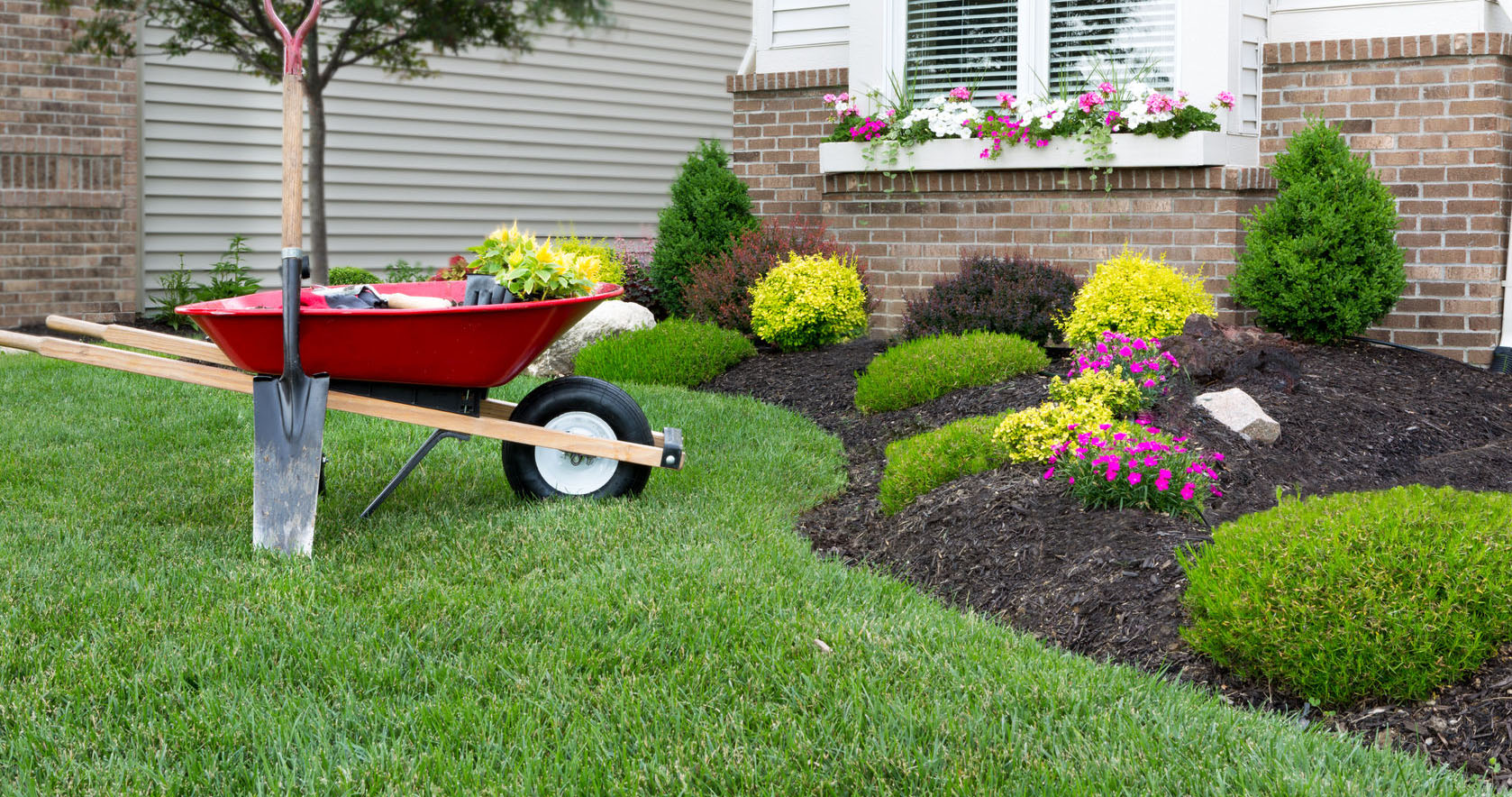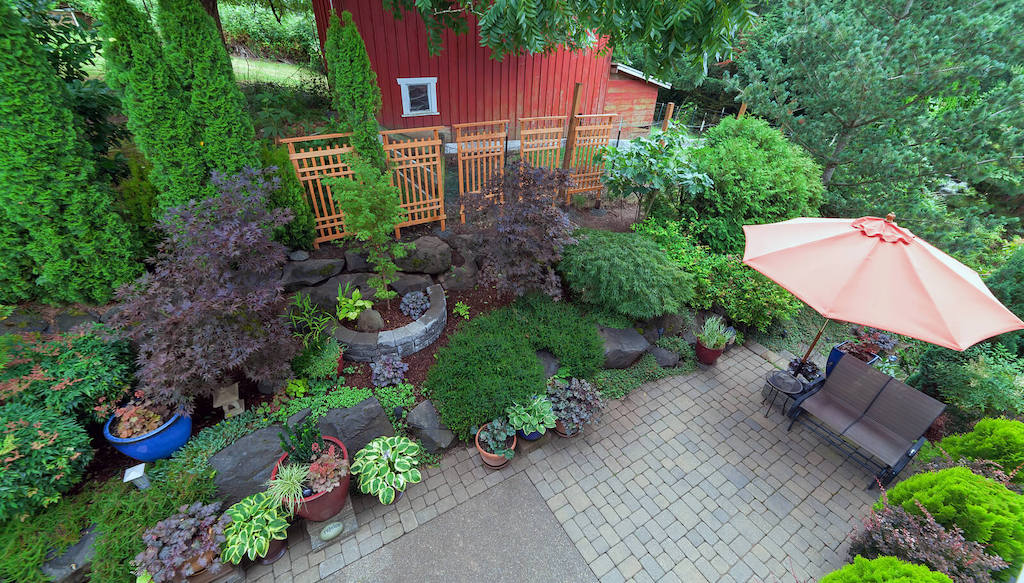Home>Gardening Tips and Tricks>Eco-Friendly Gardening>What Is A Benefit To Landscaping With Native Plants?
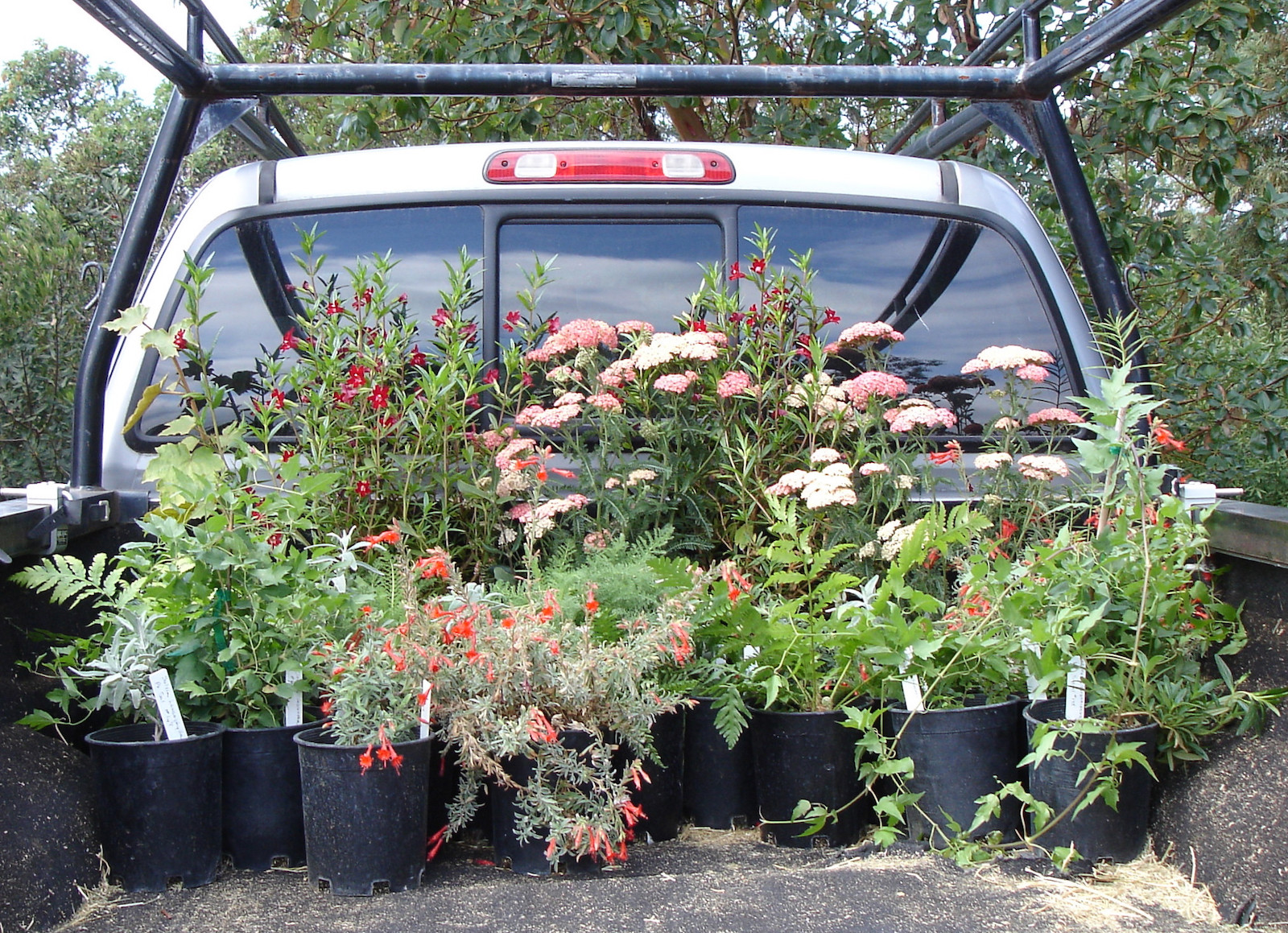

Eco-Friendly Gardening
What Is A Benefit To Landscaping With Native Plants?
Modified: February 8, 2024
Discover the benefits of eco-friendly gardening with native plants and transform your landscape into a sustainable haven.
(Many of the links in this article redirect to a specific reviewed product. Your purchase of these products through affiliate links helps to generate commission for Chicagolandgardening.com, at no extra cost. Learn more)
Table of Contents
Introduction
Welcome to the world of eco-friendly gardening! In a time where environmental consciousness is on the rise, more and more people are turning to sustainable practices to create beautiful and thriving gardens. One such practice is landscaping with native plants, which offers a multitude of benefits beyond just aesthetic appeal.
When we talk about native plants, we refer to the species that are naturally found in a specific region or ecosystem. These plants have evolved over time to adapt to the local climate, soil conditions, and available resources. By incorporating native plants into your landscape design, you can create a harmonious balance between nature and your surroundings.
Native plants not only provide a sense of place and connection to the local environment, but they also offer numerous advantages that make them an ideal choice for eco-friendly gardening. In this article, we will explore the various benefits of landscaping with native plants and why they are the preferred choice for environmentally-conscious gardeners like yourself.
From the conservation of resources to lower maintenance requirements, enhanced adaptability to improved soil health, and much more, native plants bring forth a host of advantages that go beyond conventional gardening practices. So, let’s dive into the world of native plants and discover the incredible benefits they offer for both your garden and the environment.
Maintaining Biodiversity
One of the key benefits of landscaping with native plants is the preservation and enhancement of biodiversity. Native plants have evolved alongside local wildlife, forming complex ecological relationships that are essential for the health and balance of an ecosystem.
When you incorporate native plants into your garden, you provide a habitat and food source for a variety of native species, including birds, butterflies, bees, and other beneficial insects. These plants act as hosts for native insects and provide nectar and pollen for pollinators. By attracting these species, you create a vibrant and diverse ecosystem that is essential for the overall health and functioning of the environment.
Biodiversity plays a crucial role in maintaining ecological stability. Native plants support a web of interactions between organisms, making your garden a part of a larger picture. As a result, the presence of native plants can help control pests naturally, reduce the need for harmful pesticides, and create a more resilient ecosystem that can better withstand disturbances.
Additionally, by choosing native plants, you contribute to the preservation of native plant species and their genetic diversity. Many native plants are threatened by invasive species and habitat loss, but by incorporating them into your garden, you become a steward of biodiversity, helping to conserve these unique and valuable plants.
So, by landscaping with native plants, you are not only creating a beautiful garden but also actively participating in the conservation of biodiversity and supporting a healthier and more sustainable environment.
Conservation of Resources
Landscaping with native plants is a sustainable choice that promotes the conservation of valuable resources, such as water, energy, and time. Native plants have evolved to thrive in the local climate and soil conditions, making them naturally adapted to the region’s water availability.
One of the significant advantages of native plants is their ability to tolerate drought conditions. Unlike non-native plants that often require frequent watering, native plants have deep root systems that allow them to access water from lower soil layers. This enhanced drought resistance reduces the need for excessive irrigation, saving water resources and reducing water bills.
Furthermore, native plants have evolved to be more efficient in their water usage, requiring less maintenance and attention compared to non-native options. This conservation of water not only benefits your garden but also contributes to the overall conservation efforts in your community.
In addition to water conservation, landscaping with native plants also promotes energy conservation. Native trees and shrubs provide natural shade in the summer, helping to cool your home and reduce the need for air conditioning. This passive cooling effect can significantly lower energy consumption and reduce your carbon footprint.
Moreover, the use of native plants can also save you valuable time and effort in garden maintenance. Since native plants are adapted to local conditions, they are naturally more resistant to pests and diseases. This means less time spent on applying pesticides and fungicides, and more time enjoying your garden.
Overall, landscaping with native plants helps to conserve vital resources like water and energy while minimizing the need for excessive maintenance. By choosing native plants, you are making an eco-friendly choice that preserves resources for future generations and promotes a more sustainable way of gardening.
Lower Maintenance
One of the key advantages of landscaping with native plants is the lower maintenance they require compared to non-native plants. Native plants have evolved to adapt to the local climate, soil conditions, and available resources, making them well-suited for the natural environment.
Due to their natural adaptations, native plants are generally more resilient and resistant to pests and diseases. This means you’ll spend less time and effort on applying chemical treatments or dealing with infestations, allowing you to have a healthier and more vibrant garden with minimal intervention.
Native plants have also developed efficient root systems that help them access water and nutrients from the soil, reducing the need for frequent watering and fertilization. This not only saves you time and money but also promotes a more sustainable approach to gardening by conserving water resources and minimizing the use of artificial fertilizers.
Additionally, native plants are well-suited to the local climate, requiring less pruning and shaping compared to non-native alternatives. They have evolved to grow in harmony with the natural surroundings, allowing them to thrive with minimal human intervention. This means less time spent on shaping and pruning, and more time spent enjoying the beauty of your garden.
By choosing native plants, you can create a low-maintenance landscape that requires less effort and time to keep it looking beautiful and healthy. This is especially beneficial for those with busy lifestyles or for those who want to minimize their ecological footprint.
So, if you’re looking to spend more time enjoying your garden and less time on maintenance tasks, landscaping with native plants is the way to go. With their natural adaptations and lower maintenance requirements, native plants offer a hassle-free and sustainable solution for your landscaping needs.
Enhanced Adaptability
One of the remarkable benefits of landscaping with native plants is their enhanced adaptability to local environmental conditions. Native plants have evolved over time to withstand the specific challenges posed by the climate, soil, and other factors in their native region.
When you choose native plants for your garden, you are selecting species that are already acclimated to the local climate. This means they are better equipped to handle temperature fluctuations, extreme weather events, and seasonal changes. They have developed natural defense mechanisms to cope with these conditions, making them more resilient and capable of thriving in their environment.
Furthermore, native plants are naturally well-suited to the local soil conditions. They have evolved to extract nutrients efficiently from the soil, making them more adaptable to variations in soil composition. This adaptability leads to healthier and more robust plants, ensuring long-term sustainability and success in your garden.
The enhanced adaptability of native plants also extends to their ability to withstand various environmental stressors. Whether it’s poor soil quality, limited water availability, or exposure to pollutants, native plants have evolved strategies to cope with these challenges. This adaptability makes them a sustainable choice for landscaping, as they are better equipped to survive and thrive in challenging conditions, reducing the need for constant interventions and costly replacements.
Moreover, the adaptability of native plants extends beyond just their tolerance to environmental conditions. Native plants have also co-evolved with local wildlife, establishing important ecological relationships. They provide food and habitat for many species, creating a balanced ecosystem that supports the survival and well-being of various organisms.
By choosing native plants, you are harnessing their enhanced adaptability to create a more resilient and sustainable ecosystem in your garden. These plants not only survive but thrive in their native environment, bringing forth a host of benefits for both the plants themselves and the surrounding ecosystem.
Drought Resistance
In today’s changing climate, water scarcity has become a significant concern. Landscaping with native plants can help address this issue by utilizing species that are naturally adapted to withstand drought conditions.
Native plants have evolved to thrive in specific regions, including areas with limited water resources. They have developed various strategies to maximize water use efficiency, such as deep root systems that can tap into deeper soil layers to access water. These deep roots allow native plants to withstand drought conditions and survive with minimal irrigation.
Unlike non-native plants, which often require constant watering to stay healthy, native plants are well-suited to the natural rainfall patterns of their region. They have the ability to tolerate extended periods of dryness without suffering significant damage or wilting. This resilience to drought makes them an ideal choice for water-wise gardening.
By choosing drought-resistant native plants for your garden, you can significantly reduce your water consumption. This not only saves you money on water bills but also helps to conserve precious water resources in your community. Additionally, drought-resistant native plants are a sustainable solution for regions facing water restrictions or experiencing frequent drought conditions.
In areas prone to drought, landscaping with native plants can contribute to the preservation of local ecosystems. Native plants provide critical habitats and food sources for wildlife, even during periods of water scarcity. By incorporating drought-resistant native plants into your landscape, you are creating a haven for birds, butterflies, and other beneficial insects, maintaining a thriving ecosystem even in challenging conditions.
Moreover, the deep root systems of native plants help promote water infiltration and prevent soil erosion. This reduces runoff and improves water absorption, enhancing the overall health of your garden and the surrounding environment.
So, if you live in an area that experiences drought or if you want to conserve water resources in your garden, consider incorporating drought-resistant native plants. These resilient plants not only survive drought conditions but also contribute to a more sustainable and water-wise landscape.
Pest and Disease Resistance
One of the significant advantages of landscaping with native plants is their natural resistance to pests and diseases. Native plants have co-evolved with local insects and pathogens, developing defense mechanisms that make them more resistant to common garden pests and diseases.
Unlike non-native plants that may lack natural defenses, native plants have evolved to repel or deter pests through various means. They may produce chemical compounds that are unappealing or toxic to pests, have physical structures that provide barriers, or attract beneficial insects that feed on pests.
By incorporating native plants into your garden, you can reduce the need for pesticides and chemical treatments. Native plants are less likely to suffer from infestations and diseases, making them low-maintenance and environmentally-friendly choices for your landscape.
Furthermore, the use of native plants can help promote a balanced ecosystem by attracting beneficial insects and natural predators. Native plants provide food and habitat for beneficial insects such as ladybugs, lacewings, and pollinators like bees and butterflies. These insects play a vital role in controlling pest populations, ensuring the health and harmony of your garden.
Native plants also contribute to genetic diversity, which can help prevent the spread of pests and diseases. By planting a variety of native species, you create a more resilient and diverse ecosystem that is less susceptible to large-scale outbreaks.
Choosing native plants also helps to reduce the risk of introducing invasive species into your garden. Non-native plants, especially those that are invasive, can disrupt ecosystems and outcompete native plants. Native plants, on the other hand, have established natural resistance to local pests and diseases, making them a safer and more sustainable choice.
Incorporating pest and disease-resistant native plants into your garden not only reduces the need for chemical interventions but also supports a healthier and more balanced ecosystem. Native plants are more capable of withstanding attacks from pests and diseases, ensuring the long-term success and sustainability of your garden.
Improved Soil Health
Landscaping with native plants offers significant benefits for soil health and fertility. Native plants have evolved to thrive in the specific soil conditions of their region, and their presence can lead to improvements in soil structure, nutrient cycling, and overall soil health.
One of the key advantages of native plants is their ability to establish deep root systems. These extensive root systems penetrate deeper into the soil, effectively improving its structure and stability. The roots create channels for water and air to penetrate, enhancing infiltration and reducing erosion. This results in healthier, well-drained soil that is more resistant to compaction.
Native plants also help to increase organic matter in the soil. As they shed leaves, flowers, and other plant material, these organic materials decompose and contribute to a rich layer of organic matter. This organic matter improves soil fertility, enhances moisture retention capacity, and provides a habitat for beneficial soil organisms, such as earthworms and beneficial bacteria.
Additionally, native plants have co-evolved with soil microorganisms, forming symbiotic relationships that benefit both the plants and the soil. Some native plants have root structures that host specific bacteria called nitrogen-fixing bacteria. These bacteria convert atmospheric nitrogen into a form that plants can absorb, enriching the soil with essential nutrients.
Furthermore, native plants help increase biodiversity within the soil. The complex network of roots and the presence of organic matter provide a habitat for beneficial soil organisms, including bacteria, fungi, earthworms, and other microorganisms. These organisms help in nutrient cycling, decomposition, and soil aeration, contributing to the overall health and fertility of the soil.
By landscaping with native plants, you can create a garden ecosystem that fosters soil health and fertility. The deep root systems, organic matter contributions, and symbiotic relationships with soil organisms enrich the soil, promoting long-term sustainability and the success of your garden.
Cost-effectiveness
Landscaping with native plants not only offers environmental benefits but also proves to be cost-effective in the long run. Native plants are inherently adapted to the local climate, soil conditions, and available resources, making them a natural and sustainable choice for your garden.
One of the primary cost-saving benefits of native plants is their reduced need for extensive irrigation. Native plants are well-adapted to the local rainfall patterns, often requiring minimal supplemental watering once established. This can result in significant savings on water bills, especially in regions prone to drought or with water restrictions in place.
Moreover, native plants generally have lower maintenance requirements compared to non-native plants. Their inherent resilience and ability to withstand local environmental conditions mean less time and effort spent on controlling pests, diseases, and maintenance tasks such as pruning or fertilizing. With lower maintenance needs, you can save on the cost of pesticides, fungicides, and other gardening products.
In addition, native plants have naturally evolved to thrive in the local soil conditions, reducing the need for soil amendments or costly fertilizers. They are adapted to efficiently extract nutrients from the soil, eliminating the need for excessive fertilization. This saves you money on expensive fertilizers and ensures a healthier and more sustainable soil ecosystem.
Furthermore, native plants are generally more readily available and accessible in local nurseries or seed banks. Their popularity has grown as awareness of their benefits increases, making them a cost-effective choice for landscaping projects. Additionally, many native plant species are perennial, meaning they come back year after year, reducing the need for annual plant replacements and saving on gardening expenses.
By choosing native plants for your landscape, you can create a beautiful and eco-friendly garden while also saving on long-term costs. From reduced irrigation needs and lower maintenance requirements to the avoidance of expensive soil amendments and fertilizers, native plant landscaping proves to be a cost-effective and sustainable choice for your outdoor space.
Conclusion
Landscaping with native plants offers a multitude of benefits for both the environment and your garden. Native plants are naturally adapted to the local climate, soil conditions, and available resources, making them a sustainable and eco-friendly choice for your outdoor space.
By incorporating native plants into your landscape design, you not only create a beautiful and vibrant garden but also contribute to the preservation of biodiversity. Native plants support local wildlife, providing habitats and food sources for birds, butterflies, bees, and other essential pollinators. This promotes a healthier and more balanced ecosystem, ensuring the survival and well-being of various species.
Moreover, native plants help conserve vital resources such as water and energy by their natural ability to thrive in the local environment. With their deep root systems and water-efficient strategies, native plants require less irrigation, reducing water consumption and saving on water bills. Additionally, their natural shade and energy-saving properties contribute to lower energy consumption and a reduced carbon footprint.
Native plants also offer the advantage of lower maintenance requirements. With their natural resistance to pests and diseases, native plants eliminate the need for excessive chemical treatments. They are well-adapted to the local climate, reducing the need for constant pruning or shaping. This saves you time, effort, and money, allowing you to spend more leisurely enjoying your garden.
Furthermore, native plants exhibit enhanced adaptability to local environmental conditions, including drought resistance. Their ability to withstand dry spells and limited water availability reduces the need for extensive irrigation and contributes to water conservation efforts.
The improved soil health resulting from the presence of native plants brings forth additional benefits. The deep root systems, organic matter contributions, and symbiotic relationships with soil organisms enhance soil structure, nutrient cycling, and overall soil fertility.
Last but not least, landscaping with native plants proves to be a cost-effective choice. The reduced need for irrigation, lower maintenance requirements, and decreased dependency on costly fertilizers and soil amendments result in long-term savings for gardeners.
In summary, landscaping with native plants not only creates a stunning and sustainable garden but also supports the preservation of biodiversity, conserves resources, enhances adaptability, promotes drought resistance, improves soil health, and proves to be cost-effective. Embracing eco-friendly gardening practices through the use of native plants allows us to create a harmonious and thriving outdoor space while playing our part in protecting the environment for future generations.

